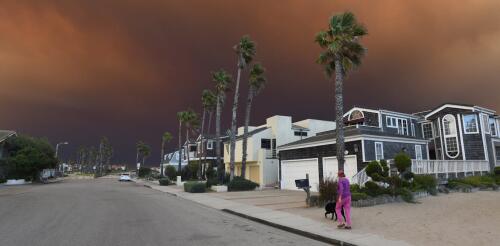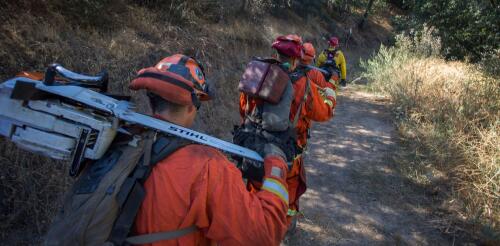California
When wildfires rage, the immediate threat is obvious – but smoke from the fires actually kills far more people than the flames. As fires become more frequent, that smoke is leading to a public health crisis. In a new study published in the journal Science Advances, we found that wildfire smoke likely contributed to more than 52,000 premature deaths across California alone from 2008 to 2018, with an economic impact from the deaths of more than US$430 billion. Previous studies have examined the short-term health risks from wildfire smoke, but few have assessed how exposure to wildfire smoke over years adds up to shorten human lives. Smoke from far-off wildfires turns the skies orange over San Francisco in 2020. Running in wildfire smoke carries harmful particles deep into a person’s lungs. AP Photo/Tony Avelar Wildfire risk and severity have grown as the climate has changed and as more...
With the Olympic torch extinguished in Paris, all eyes are turning to Los Angeles for the 2028 Olympics. The host city has promised that the next Summer Games will be “car-free.” For people who know Los Angeles, this seems overly optimistic. The car remains king in LA, despite growing public transit options. When LA hosted the Games in 1932, it had an extensive public transportation system, with buses and an extensive network of electric streetcars. Today, the trolleys are long gone; riders say city buses don’t come on schedule, and bus stops are dirty. What happened? This question fascinates me because I am a business professor who studies why society abandons and then sometimes returns to certain technologies, such as vinyl records, landline phones and metal coins. The demise of electric streetcars in Los Angeles and attempts to bring them back today vividly demonstrate the costs and challenges of such revivals. The 2028 Olympi...
The Earth is losing animals, plants and other living things so fast that some scientists believe the planet is entering its sixth mass extinction. But there’s some surprising good news: Urban areas may be key to slowing down or even reversing this crisis. This idea may seem counterintuitive, since studies show that urbanization is a big driver of biodiversity loss. Cities alter the environment with artificial lighting and noise pollution, which affect many species. And urban land cover is expected to increase by 2.5% globally between 2000 and 2030 as more people move to cities. As one measure of urbanization, half of the continent of Europe is less than 1 mile (1.5 kilometers) from a roadway or railway line. No location on the continent is more than 6 miles (10 kilometers) from these features. But there are ways for cities to use nature-based solutions to slow species loss within their borders. At a major international conference on biodiversity loss in 2022, global lead...
The weekly round-up on the climate crisis and data on carbon dioxide levels in the atmosphere. While world leaders were gathered for the United Nations General Assembly and the subsequent “climate ambition summit”, over 70 thousand climate activists they filled the streets of New York on Sunday 17 September, to ask the President of the United States, Joe Biden, to stop the approval of new fossil fuel projects.The demonstration was supported by more than 700 global climate organizations who participated in protests in numerous other countries. “Thousands of people around the world are returning to the streets to demand that we stop what is killing us.We need to think about who will be living on our planet in 30, 40, 50 years.And negative responses are not contemplated,” he said Democratic Congresswoman Alexandria Ocasio-Cortez during the rally. Among the participants was 8-year-old Athena Wilson of Boca Raton, Florida.She and her mother Maleah flew from Florida to New York.We...
If you call 911 in rural Georgia, the nearest emergency responders might come from the local prison. In 1963, the Georgia Department of Corrections began a program to train incarcerated people as firefighters to support not only their prisons, but also the surrounding communities. Over time, the program has grown dramatically. Today, prison fire teams from 19 Georgia state prisons, including a women’s prison, and six county prisons are trained in firefighting and emergency medical response. The crews respond to motor vehicle accidents, structure fires, brush fires, hazardous materials incidents and search and rescue efforts, among other emergencies – all without being paid a salary. Jackson County, Georgia, describes incarcerated firefighters as responding to “every structural fire in Jackson County, where they serve as manpower support to every Fire Department on scene.” The all-female firefighting crew at Lee Arrendale Stat...




